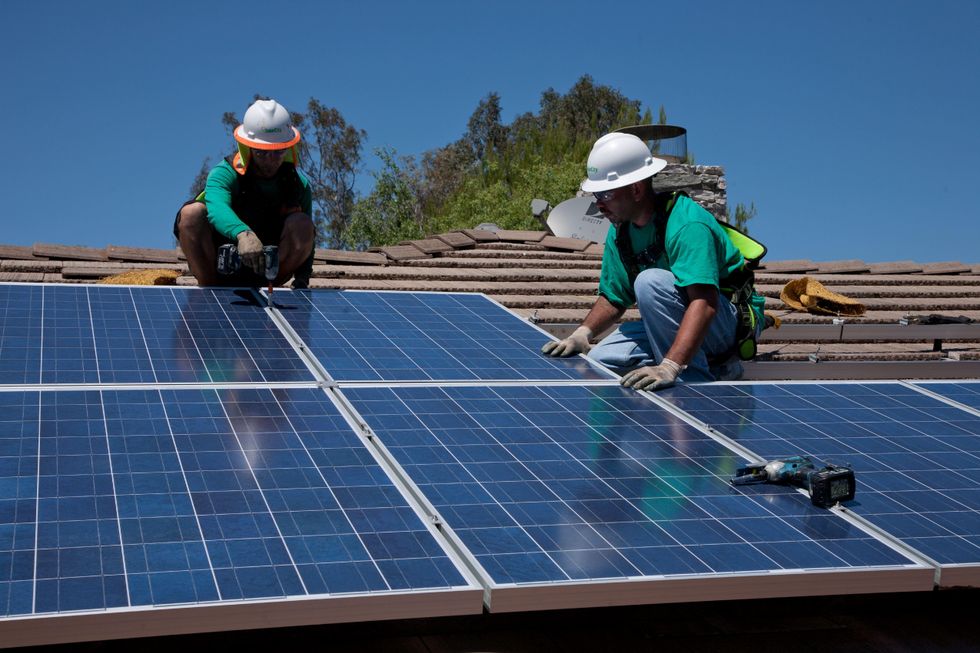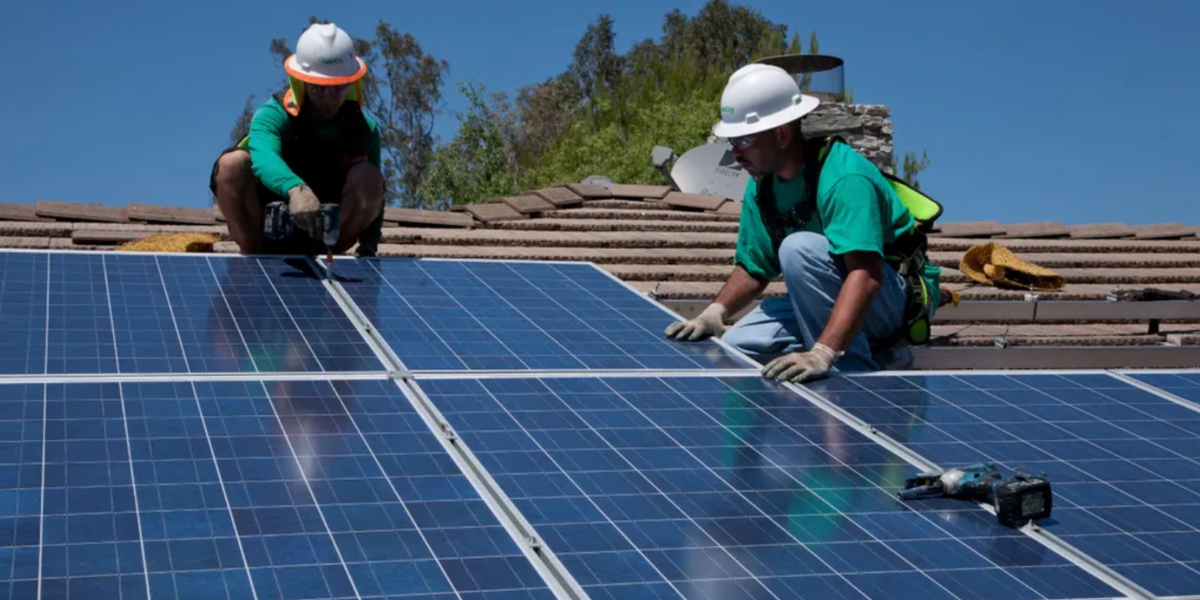
Clean energy manufacturing jobs will more than double by the end of the decade if countries worldwide live up to their climate and energy pledges, according to a report published Thursday by the International Energy Agency.
“The energy world is at the dawn of a new industrial age—the age of clean energy technology manufacturing—that is creating major new markets and millions of jobs but also raising new risks, prompting countries across the globe to devise industrial strategies to secure their place in the new global energy economy,” the IEA report—entitledEnergy Technology Perspectives 2023—asserts.
The publication is a “comprehensive analysis of global manufacturing of clean energy technologies today—such as solar panels, wind turbines, EV batteries, electrolyzers for hydrogen, and heat pumps—and their supply chains around the world, as well as mapping out how they are likely to evolve as the clean energy transition advances in the years ahead.”
According to the paper:
The global market for key mass-manufactured clean energy technologies will be worth around $650 billion a year by 2030—more than three times today’s level—if countries worldwide fully implement their announced energy and climate pledges. The related clean energy manufacturing jobs would more than double from six million today to nearly 14 million by 2030—and further rapid industrial and employment growth is expected in the following decades as transitions progress.
The report cautions that “at the same time, the current supply chains of clean energy technologies present risks in the form of high geographic concentrations of resource mining and processing as well as technology manufacturing.”
For example, the three largest producers of technologies like solar panels, wind turbines, electric vehicle batteries, electrolyzers, and heat pumps “account for at least 70% of manufacturing capacity for each technology—with China dominant in all of them.”
“Meanwhile, a great deal of the mining for critical minerals is concentrated in a small number of countries,” the analysis states. “The Democratic Republic of Congo produces over 70% of the world’s cobalt, and just three countries—Australia, Chile, and China—account for more than 90% of global lithium production.”
IEA executive director Fatih Birol said in a statement that the new global energy economy “has become a central pillar of economic strategy and every country needs to identify how it can benefit from the opportunities and navigate the challenges.”
“We’re talking about new clean energy technology markets worth hundreds of billions of dollars as well as millions of new jobs,” Birol continued. “The encouraging news is the global project pipeline for clean energy technology manufacturing is large and growing. If everything announced as of today gets built, the investment flowing into manufacturing clean energy technologies would provide two-thirds of what is needed in a pathway to net-zero emissions.”
“The current momentum is moving us closer to meeting our international energy and climate goals—and there is almost certainly more to come,” he added.
“The encouraging news is the global project pipeline for clean energy technology manufacturing is large and growing.”
Birol also stressed that “the world would benefit from more diversified clean technology supply chains.”
“As we have seen with Europe’s reliance on Russian gas, when you depend too much on one company, one country, or one trade route—you risk paying a heavy price if there is disruption,” he noted, referring to Russia’s ongoing war against Ukraine.
An analysis of U.S. federal data published earlier this month by the sustainable energy development nonprofit SUN DAY Campaign concluded that wind and solar alone could generate more electricity in the United States than nuclear and coal in 2023.
A separate report released this week by the Rhodium Group, a New York-based nonpartisan research firm, found that while U.S. carbon emissions rose for the second straight year in 2022, renewable energy surpassed coal as a power source in the United States for the first time in more than 60 years.




